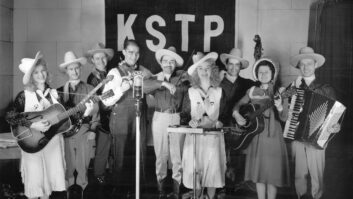In this guest commentary, Rima Dael, CEO of the National Federation of Community Broadcasters, responds to John Schneider’s story “Radio and the Roots of Country Music.” Comment on this or any article. Email radioworld@futurenet.com.
The National Federation of Community Broadcasters (NFCB) values Radio World as an essential resource, vital for serving the diverse communities our member stations represent. NFCB’s members primarily operate music format stations, showcasing an eclectic array of genres, including Classical, Jazz, Americana, Folk, Country, Bluegrass, Reggae, Hip Hop and World Music.
Community radio has always embraced voices and music from the margins, offering a platform often overlooked by mainstream media. Our membership is deeply passionate about the music we share and the rich histories embedded within these genres.
With this background, we write in response to Radio World’s article in its original publishing “Radio and the Roots of Country Music,” published on May 28, 2024. While the article provides a historical overview of radio’s role in popularizing country music, there are several critical issues that NFCB wishes to address.
In its original publication, the article used the terms “hillbilly” music and “race” music. These terms are not only outdated, but also carry offensive, bigoted connotations. Such terminology undermines the rich cultural heritage and contributions of the artists involved. Modern discussions of music history require more respectful and accurate language. “Hillbilly” music is now referred to as Appalachian, Americana or Roots music.
The term “Race music” was a derogatory label used in the 1920s and 1930s to describe African American music, including Blues and Jazz. (Thank you to Radio World for removing this term in the updated article.) It is essential to refer to these genres appropriately and avoid perpetuating harmful stereotypes.
Secondly, the article presents an incomplete and somewhat inaccurate history by neglecting the significant contributions of BIPOC communities, particularly Black communities, to the origins of country music.
Early music recording and radio were marred by racial gatekeeping, where white musicians often covered African American songs to market them to white audiences. This segregation continued into the early days of television, effectively whitewashing the roots of country music. This oversight in the May article perpetuates a narrow and biased understanding of country music’s history.
The timing of the article seemed particularly insensitive, given the current and on-going discussions around gatekeeping in the country and western genres. The release of Beyoncé’s album and Rhiannon Giddens’ work in reclaiming the Black roots of country music are pivotal moments that should be recognized and discussed. These contemporary issues underscore the need for a more inclusive and accurate portrayal of country music’s history.

One of NFCB’s member stations, Radio Bristol, affiliated with the Birthplace of Country Music Museum, exemplifies the commitment to celebrating the roots of American music through original programming.
Kris Truelsen, program director at Radio Bristol, recommended several resources for understanding the influences of BIPOC communities on country music: “African Banjo Echoes In Appalachia: A Study of Folk Traditions” by Cici Conway and “Love & Theft: Blackface Minstrelsy and the American Working Class” by Eric Lott. As mentioned above, Rhiannon Giddens’ remarks on defending the Black roots of country music are highly insightful.
Ken Burns’ documentary on country music provides a comprehensive view of the genre’s 100-year history, highlighting the contributions of Black, Latinx and Indigenous communities and documenting the gatekeeping that sought to exclude artists of color.

Personally, I am most familiar with Phil Jamison’s book, “Hoedowns, Reels and Frolics: Roots and Branches of Southern Appalachian Dance,” which offers a thorough examination of the multicultural roots of Appalachian dance, music and song and its influences to American dance and music.
Other notable resources include the exploration of Mexican-American contributions to country music by UCLA and the Black Opry, a platform for Black artists in country, Americana, blues, folk and roots music. Additionally, KRCL in Salt Lake City, Utah, provides a list of contemporary Indigenous artists in Americana, Roots and Country music.
This article is not a call-out to Radio World but a call-in to enrich the narrative of country music’s history and address outdated language rooted in a prejudiced past.
NFCB aims to contribute constructively to the conversation about country music’s history, framing it within a broader cultural context.
A more nuanced and inclusive approach is necessary to truly honor the diverse origins and ongoing evolution of country music as part of our collective American history.







